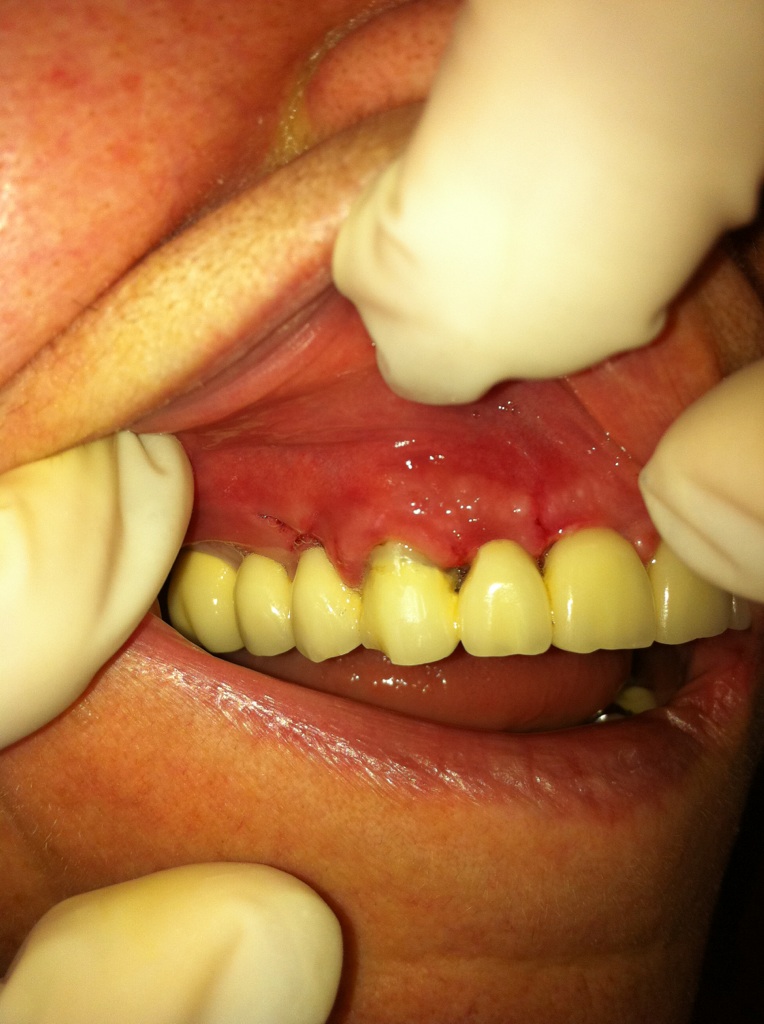HOW CAN I SAVE MY TOOTH FROM EXTRACTION?
Published in the magazine 30 Days of Health, Issue Νο.110, April–May 2016
There are some simple steps we need to follow so that we can keep our teeth in our mouth for many years
Most of the people believe that they know how to brush their teeth and for this reason they overreact when their dentist tells them that their teeth are full of microbial plaques. The phrase “but I brush them all the time” is often heard. The truth is that, a person may brush them many times a day, but not in the right way.
Research that has been made, even among dentists, has shown that in some cases even dentists did not brush their teeth in the right way. Brushing of the inner surfaces of the teeth, on the side of the tongue and the palate, seems to be unknown to many people. The use of dental floss or of an interdental brush is even more important than simple brushing, because food is stuck between the teeth and rots there. Many times the patients ask their dentist:
Why do they say to me that I have a bad breath?
Why do I have a bad taste in my mouth?
What is the problem?
Rotting teeth produce acids which destroy the tooth enamel that leads to the development of dental caries. As a result of this there is malodor. This is no small matter. Many human relationships suffer due to bad breath.
Very often, people with bridges are also complaining of bad breath. The answer is either that they do not use interdental brushes and dental floss, or that the bridge is detached, or that it was not fitted well and food is stuck between the tooth and the bridge which eventually rots in there and creates a totally unpleasant condition. In such a case, the patient must visit the dentist, who will have to examine very carefully if there are dental caries or if the bridge is detached. This must be always followed by a radiographic control, as it is very often difficult to diagnose dental caries under an old filling or bridge. In digital radiography the amount of radiation is negligible and therefore there must be no hesitation regarding the radiographic control.
When we examine our teeth we must be very careful regarding the color of the gums. Gums in normal condition are pink, not red. Red gums are a sign of inflammation which means that a teeth cleaning must be immediately performed by a dentist. In this case we will find out that neither our teeth are clean. There is smear on them. This is the dental microbial plaque. This leads to an inflammation of the gums which will result in the development of gingivitis and, at an advanced stage, to periodontitis. Today, there are special techniques for the treatment of gums, and we can preserve teeth that once had severe inflammations and possibly mobility in the mouth. If the inflammation in the gums is limited to some teeth only, this may be a sign that there is dental caries in these teeth. Examination by the dentist and X-ray:
It has been proven that, in the way we live, it is necessary that we visit the dentist twice a year, because, particularly in periods of economic crisis, prevention is much more important that treatment.
Even if there are no symptoms, a radiographic control should be performed every two years in the areas that there are large dental fillings and bridges. The digital panoramic X-ray can be very helpful for the diagnosis, as we can examine the entire oral cavity in one single X-ray. Very often, minor dental caries at an initial stage are transformed into huge decay cavities and the teeth need root canal treatment (resection) and crowns and sometimes even extraction. In a few words, we do not need to feel pain in order to have a dental X-ray.
Which are the symptoms that will make us visit our dentist immediately?
- a) Sensitivity to a cold stimulus
This can be due to gingival recession. In this case a special gel which is very easily applied on the tooth can be used and, the sensitivity disappears immediately in a high percentage of the cases. The cost in this case is minor. In the case that this sensitivity is not treated and it continues for a long time period, it can lead to the necrosis of the pulp and the tooth will require root canal treatment and filling. In this case the cost will be higher.
- b) Sensitivity to a hot stimulus
In this case, things are more difficult, because, unless the symptom is at a very initial stage, this kind of sensitivity is a sign of inflammation of the pulp and it is possible that the tooth requires root canal treatment.
If someone does not take this symptom into account, the next stage could be the formation of an abscess and intense pain.
- c) Pain during chewing
This pain may be due to an inflammation of the gums or the pulp.
In the case of gum inflammation the cleaning by the dentist is the recommended treatment.
In the case of inflammation of the dental pulp due to dental caries or to an injury, the tooth requires root canal treatment.
Conditions that should motivate us so that we can prevent the worst:
The existence of cracks in a tooth may mean nothing, but it can also be the beginning of a fracture. The existence of cracks in teeth with large fillings is very dangerous, because it can lead to the extraction of the tooth. If the crack does not affect the roots of the tooth and has not caused an inflammation to the gums, then, by performing a root canal treatment and by using adhesive agents and resins, the tooth can be perfectly restored.
In this case the placement of a crown is at the discretion of the dentist and depends on the state of the tooth.
The use of a microscope helps the specialist diagnose and differentiate a simple crack from a fracture. A simple crack can heal, a fracture cannot. Many times, due to the lack of a microscope, root canal treatments (resections) have been performed in teeth with fractures, which had to be extracted after some time, with the patients going through a lot of trouble and spending much money. In other cases, teeth were extracted only because there was a superficial crack on them.
The breaking of a tooth or a filling can just be a sign that there is dental caries underneath. In many cases, a filling is all that is required. Even when you do not feel pain, it is necessary that a dentist examines you, because the next step will not be just a simple filling, since the possibility that the tooth is saved is very low if there is a tooth fracture.
In most of the cases, even a very large abscess does not mean that the tooth needs to be extracted. Also, the fact that there are problems during a root canal treatment that the dentist tries to perform does not mean that the tooth needs to be extracted. Today there is the possibility that, even in severe cases of abscesses and of teeth in which very little amount of dental tissue is left, the treatment is performed in such a way that the tooth remains in the mouth for many years.
Also the existence of a large cyst does not mean that the tooth needs to be extracted or even that a surgical removal of the cyst-apicoectomy is required. Conservative treatment, in the vast majority of cases, can create the necessary conditions so that the human body absorbs even huge cysts or eliminates large abscesses only within a few days.
Tooth extraction is the solution when all other options have been ruled out.
It is obviously must more cost effective to preserve your own teeth in your mouth than to replace them with bridges or dental implants.
It is thus very important that patients, in the case that their dentist cannot heal their tooth, cooperate with him/her in order to find a specialized dentist-endodontist who will provide a solution to their problem.
What is an Endodontist?
Endodontists are dentists with three additional years of specialty training in the techniques of Endodontic (Root Canal) Treatment-Resection. Apart from the treatment of usual cases, they are specialized in performing complex surgical procedures. They often treat difficult cases, such as teeth with unusual or complex root structure or small and narrow root canals. Their specialization, expertise and experience are valuable when the endodontic surgery is required or when there are very difficult treatment conditions. Thanks to their knowledge and expertise they can be effective when working with disabled people, people who are not capable to fully open their mouth, very old people whose teeth present particularities, people with a bad health history or people who cannot sit in the dental chair for long, due to health reasons. In all of the above cases and in many more, speed and precision in the course of treatment are quite important, as the treatment is completed in one and only session, very rapidly, and the chances of success are extremely high. This is particularly important in cases that the slightest inflammation in the mouth could be very harmful to the health of the patient. Such are the cases of prosthetic heart valves, kidney diseases, orthopedic prostheses and other health problems, where an inflammation should be avoided in any part of the human body.
99% of the root canal treatments–resections are performed with absolute success. This percentage applies in cases of very good dentists.
When the root canal treatment is performed in the scientifically right way your healed tooth can last for the rest of your life.
The current Economic Crisis that our country is very intensely experiencing, brought forth the need to return to the therapeutical treatment of patients principally. I believe that the economic difficulty of our fellow people to cover the cost of complex and expensive treatment plans should lead to the rationalization of the treatment plans and to the preservation of teeth in the mouth. We must always keep in mind that:
A tooth extraction is a very expensive solution.
Constantinos Laghios, Dental Surgeon-Endodontist, M.S.
1.A decayed tooth with a doubtful , problematic root canal treatment
2.Initial x-ray with an incorrect, unfinished root canal treatment, in a patient currently facing serious pain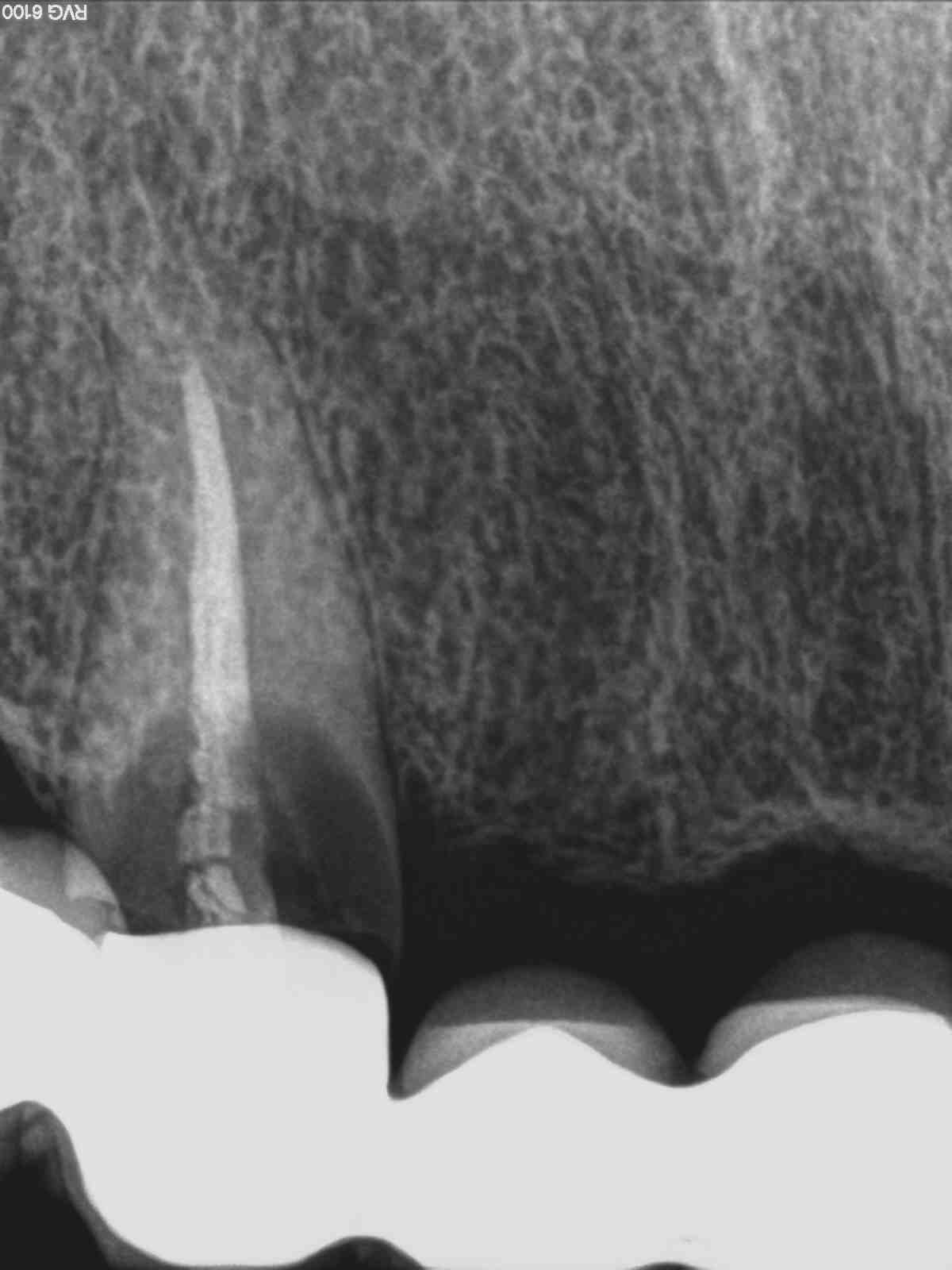
3.Α correct root canal treatment processed through a high-tech “Carl Zeiss” dental microscope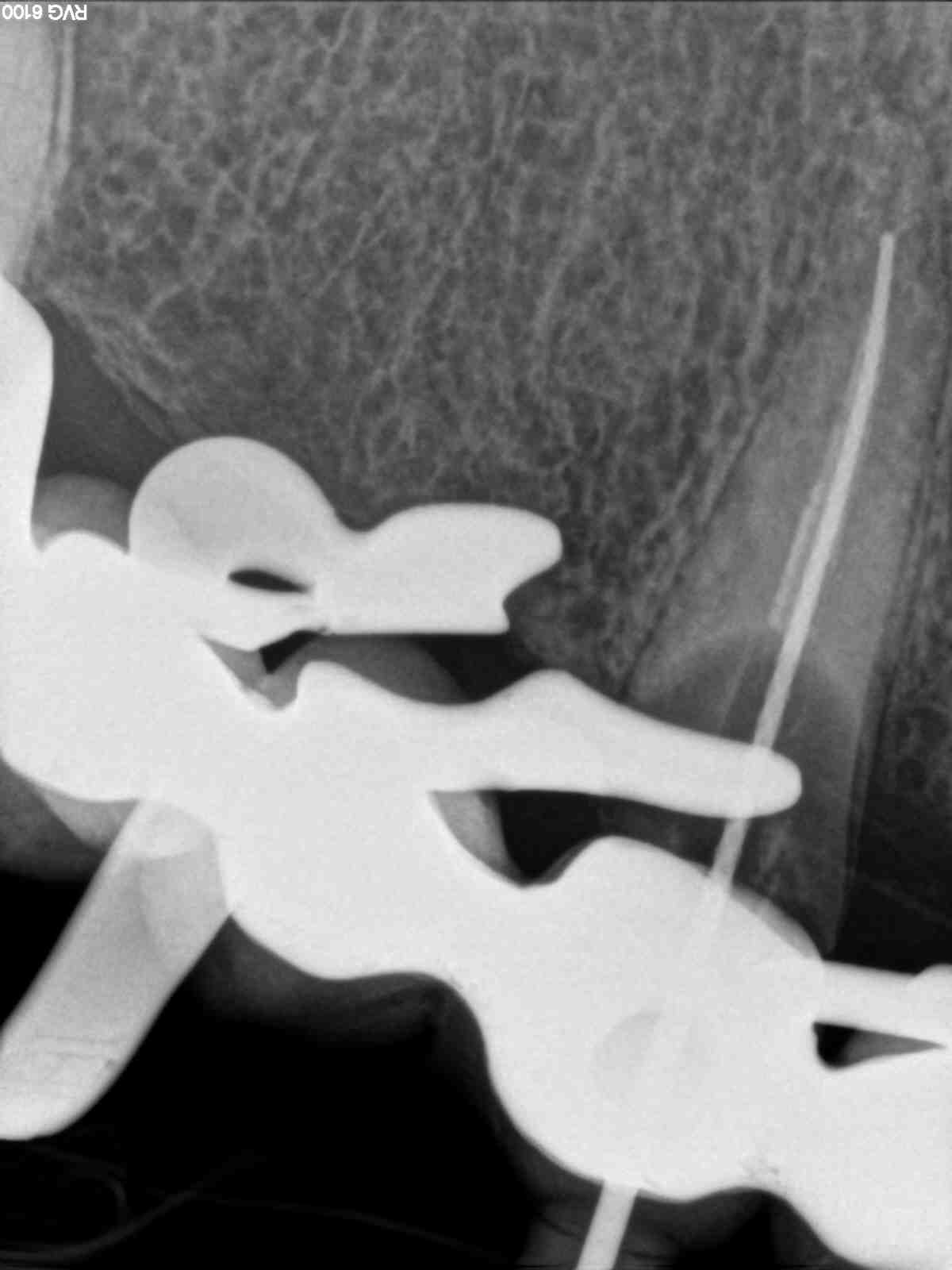
4.A successful root canal retreatment, reaching the very last millimeter of the apex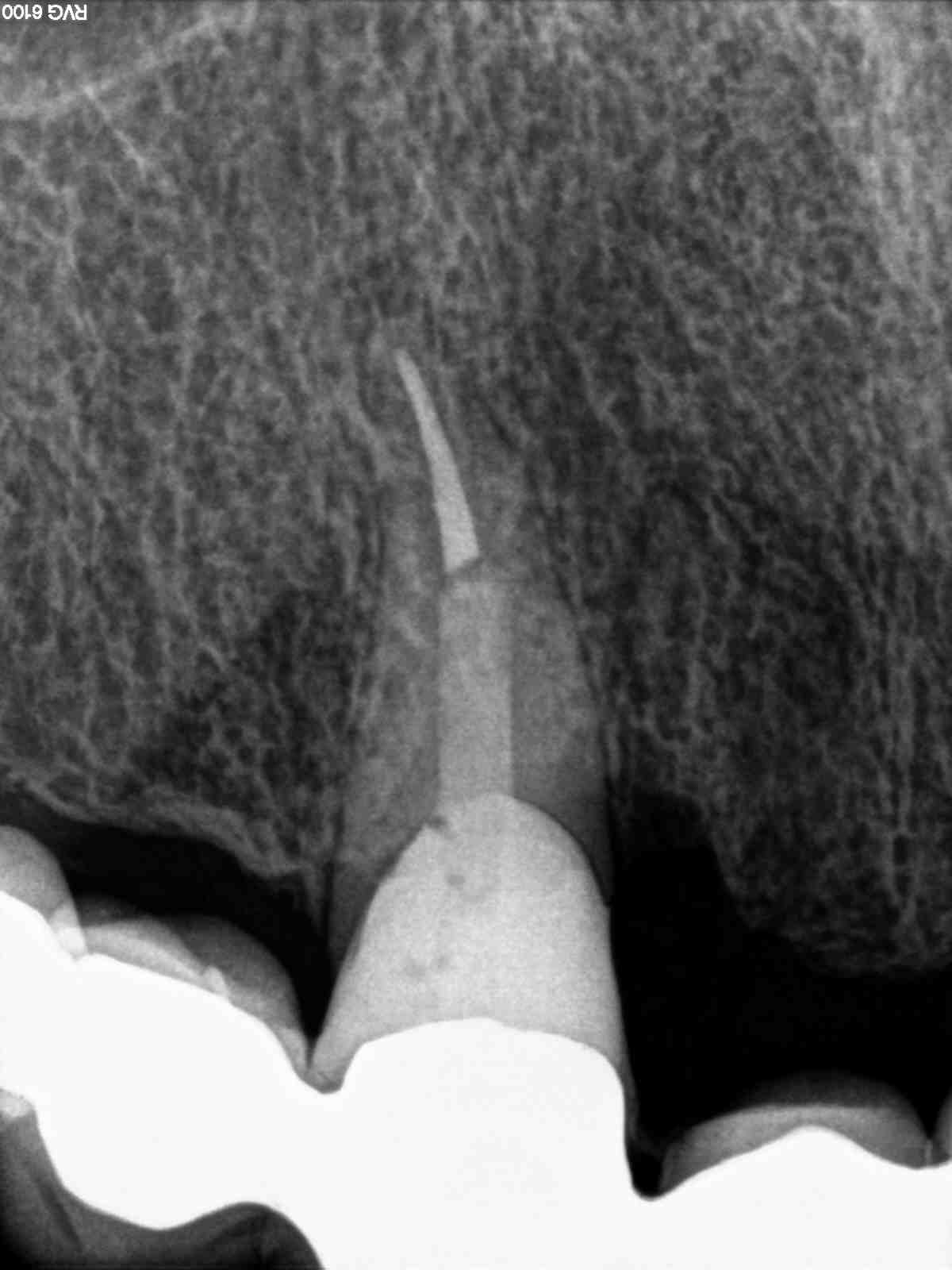
5.Flap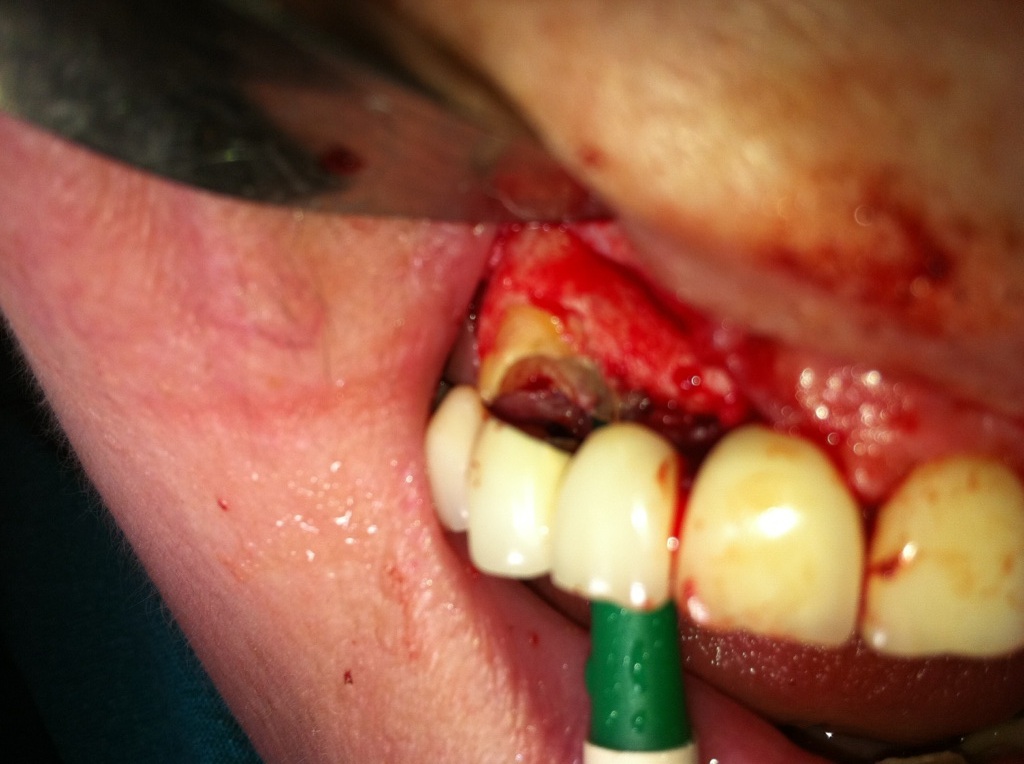
6.Placement-adhesion of a post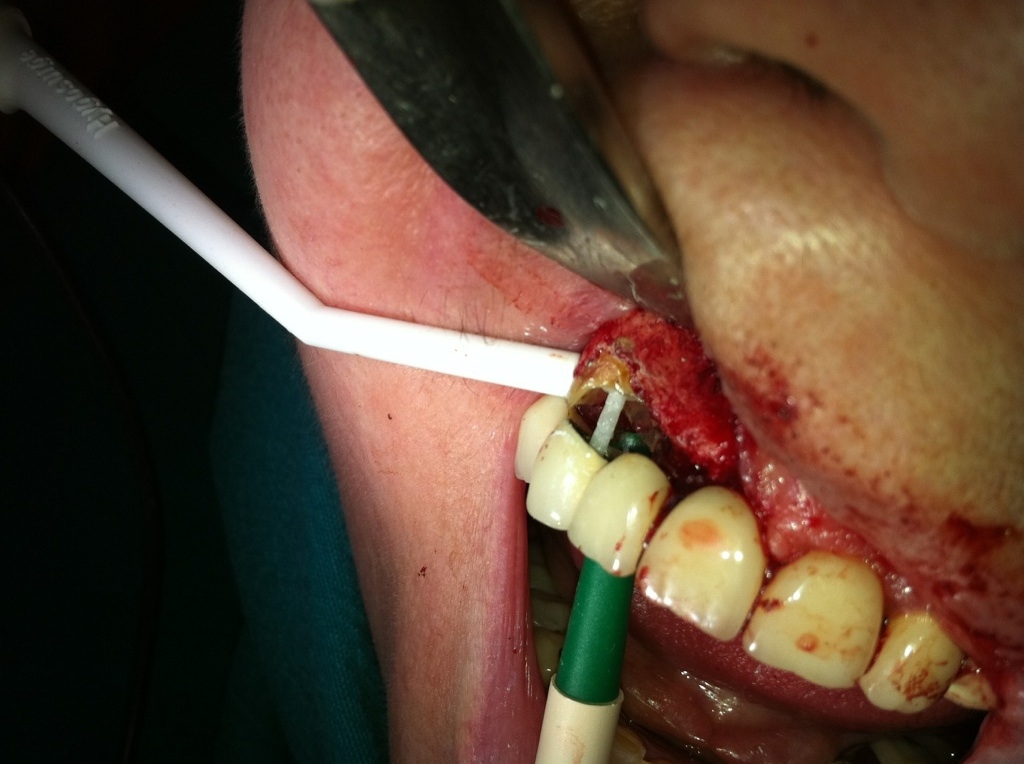
7.Placement of resin composite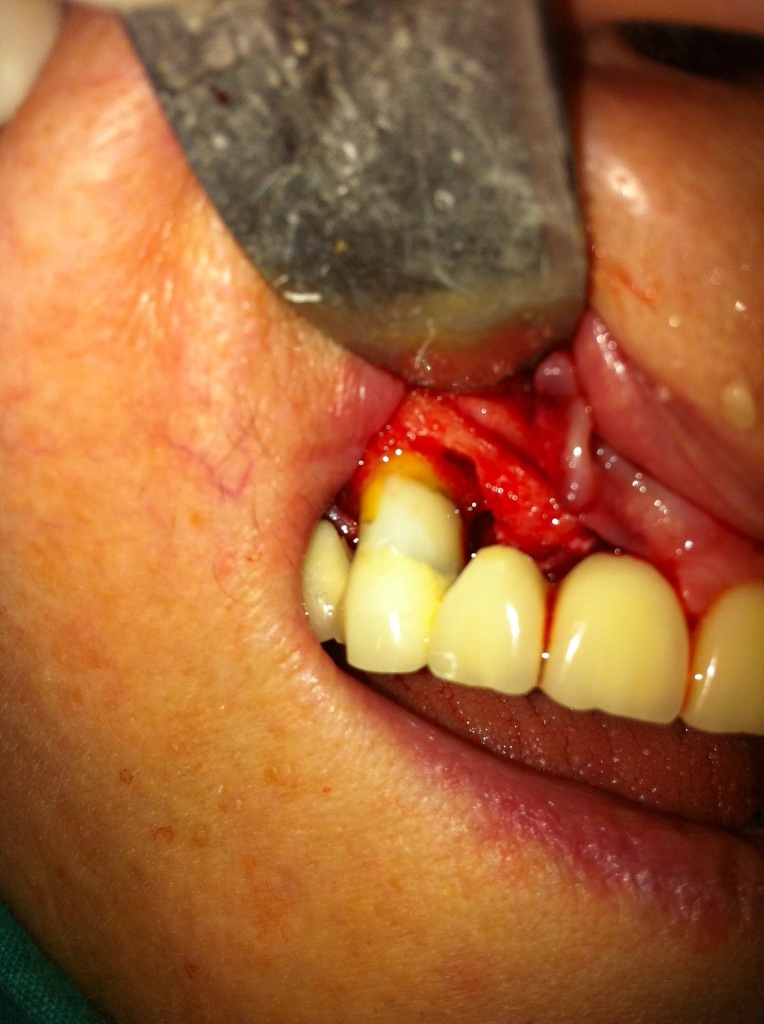
8.1-week recall: we can notice that the successfully endodontically treated tooth remains as an abutment in the existent bridge without being
necessary to replace the old bridge with a new one so the patient avoided any possible discomfort and financial burden as well